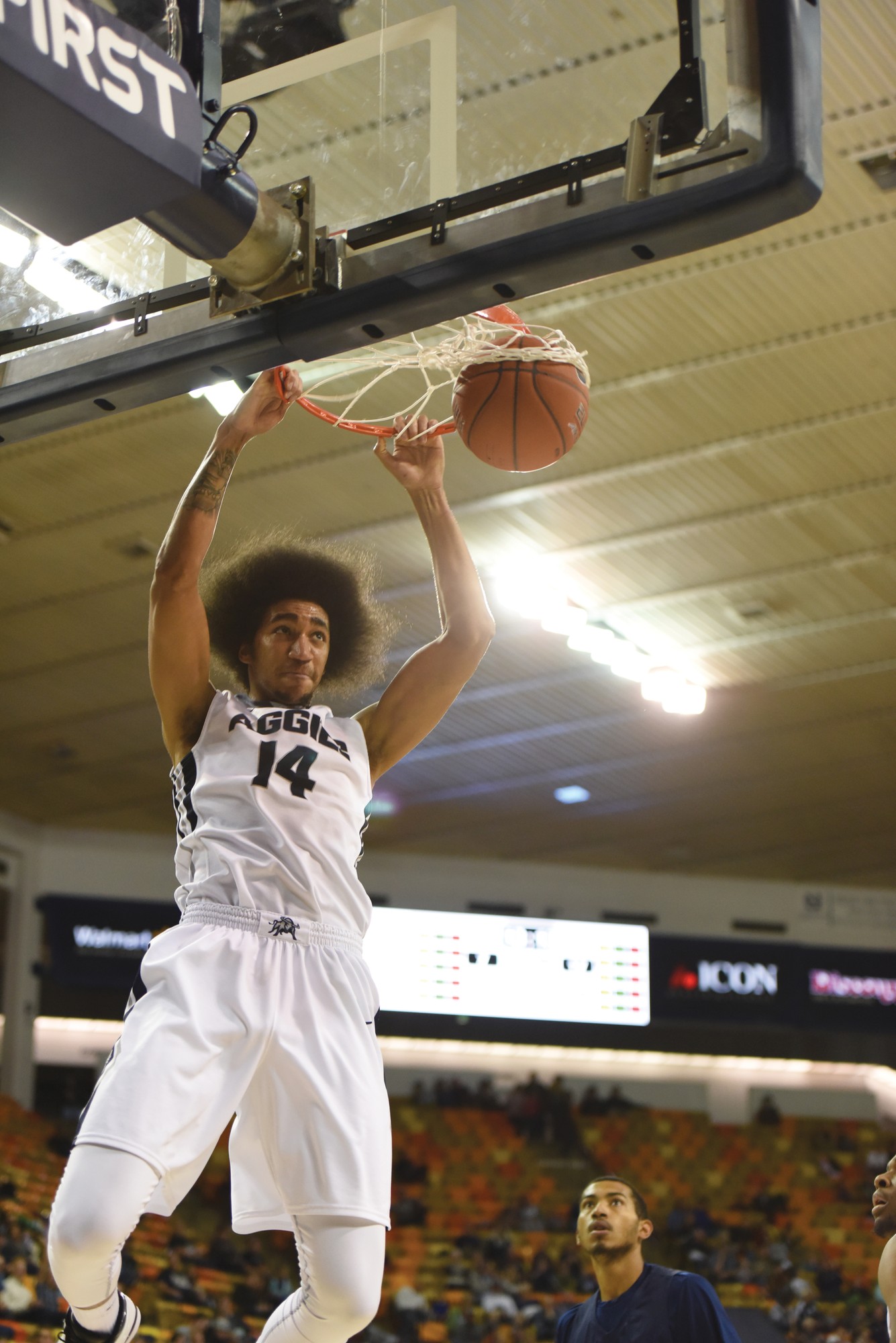Throwin’ down
“We’ve already done that research,” said Jerry Finkbeiner, head coach of the Utah State women’s basketball team. “There’s actually seven layers of shot efficiency… Our gameplan is all based on those layers.”
The research done by Finkbeiner and his team considered all the possible outcomes of a possession and ranked them according to positive impact.
Layer one is a fast-break opportunity, which most often occurs after a steal. That puts pressure on the defense before it can get set, leading to easy scoring chances. Layer two is free throws. Layer three is a scoring opportunity after an offensive rebound. Like a fast break, an offensive rebound gives the team a clean shot before the defense can recover. Next, layer four, is shots within ten feet of the hoop. Finkbeiner refers to this area of the court as the “red zone.” The fifth layer is shots beyond the 3-point line. There is a significant drop in efficiency before layer six, which is mid-range shots — between the “red zone” and the 3-point line. The seventh and final layer is turnovers, which the offense tries to completely avoid.
“Fast breaks, free throws, offensive rebounds, red zone — they’re all within ten feet of the hoop,” Finkbeiner said.
In the analytical revolution that has swept through the basketball world the past decade, shots near the rim have taken on an increased importance. And it’s not just the women’s team at Utah State that has embraced the inside game.
“It’s essential,” said Chris Jones, assistant coach for the men’s team. “If you don’t have inside scoring, then the nights you’re not making shots you have no chance to win.”
“That just makes it easy for your offense,” said sophomore center David Collette. “It gives the whole team an energy.”
While fast breaks provide the most efficient scoring opportunities — efficiency is determined by the average number of points scored per possession. For example, teams score more points per average on a fast break than on a midrange shot — they make up only a small percentage of plays run.
Both the men’s and women’s teams will run high-speed, up-tempo offenses this season, but have different strategies to get shots in the paint in a half-court offense.
David Collette, for example, is an effective low-post scorer; the team will focus on getting him the ball with his back to the basket multiple times per game, Jones said.
The women, though, don’t have a player like that, so they will focus more on movement and penetration, using a variation of the dribble-drive offense made famous by John Calipari when he led his Memphis team to the Final Four in 2008.
“It’s spread and there’s a lot of gaps,” Finkbeiner said. “It’s all about penetrating those gaps and going all the way.”
The wide-open play that both teams will incorporate will provide for a lot of highlight opportunities.
“It’s an exciting game and the fans love it,” Finkbeiner said. “My goal is that we can be top five in the country in points and steals.”
The most exciting play — one that Aggie fans will get to see a lot of, according to Jones — is the dunk.
“It pumps your team up, it pumps the crowd up, it gives your team confidence,” Jones said.
Collette knows that first hand. The center led the Aggies in dunks last year as a freshman, including a powerful one-handed slam at New Mexico when he caught the ball near the top of the key, pump-faked the defender, took one dribble and threw it down over another defender.
“It’s a huge confidence boost because once you get that first one you feel like Superman,” Collette said. “The crowd loves them, but for me I get one and I’m trying to dunk everything else.”
Even players who don’t spend as much time in the paint as the big man see the effect.
“Dunks are what all the fans want to see,” said senior guard Chris Smith. “When you dunk, especially on somebody, that’s when the Spectrum gets even crazier.”
The highlights aren’t limited to the men’s team, either — even dunks. When USU hosted its Primetime Madness event on Oct. 8, Aggie fans got a glimpse of the athleticism on the women’s team as junior forward Antoina Robinson and freshman guard Katie Toole each attempted dunks during warm-ups.
Robinson has been dunking since she was at New Mexico Junior College — “Hurt my finger a couple times doing it,” she said — when her teammate Angelica de Paulo, who also transferred to USU after her time in New Mexico, encouraged Robinson to try.
“We were just fooling around and she told me to try it,” Robinson said. “I was afraid so she just gave me the ball and told me to go to half court.”
In November of 2009, Brittney Griner became the seventh woman to dunk in a collegiate basketball game. Robinson thinks she can be the eighth.
“I’m going to get in the moment and just go for it,” she said.
— Thomas Sorenson and Kenna Cook

